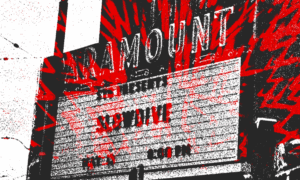
Esteemed director Wes Anderson released his latest film, “The French Dispatch,” to theaters in the United States on Oct. 22. Anderson calls the film his “love letter to journalists.” While it was originally planned for release in the summer of 2020, the movie was postponed due to the ongoing COVID-19 pandemic.
As with a majority of his films, The French Dispatch holds a large cast of prominent actors and actresses. Timothée Chalamet, Benicio del Toro, and Tilda Swinton make an appearance in Anderson’s comedy-drama, along with a multitude of other famous names who frequently feature in his films: Bill Murray, Owen Wilson, and Saoirse Ronan to name a few.
The French Dispatch is presented as an anthology — several short stories within a single movie that are connected by a sole theme. The narratives told throughout the film highlight an American newspaper, “The French Dispatch of the Liberty, Kansas Evening Sun,” and the lives of its loyal journalists at an outpost in a 20th century French city. As the staff of the newspaper attempt to produce their final issue, the journalists find themselves reminiscing on some of their favorite literary pieces as well as their beloved editor, Arthur Howitzer Jr. (Bill Murray).
Anderson is widely known for his symmetrical filming style, and The French Dispatch is no exception when it comes to this appealing composition. Almost every shot throughout the film is visually alluring and will satisfy fans who are pining to see more of Anderson’s signature technique. Set with a French backdrop, the movie displays the director’s usual flair of bright colors and whimsical air that his fans adore.
As for the plot, it can be easy to get lost in the fast-paced storytelling and vast array of characters, especially if one is not used to the swift disposition of Anderson’s films. If viewers are not expecting an anthology-style movie, it can be slightly disorienting trying to keep track of characters and the storyline. However, as the film continues and the synopsis is understood, it begins to reveal its potential.
The cast brimming with notable, cinematic personalities does not disappoint, either. The talent within the film is distributed across its immense arsenal of accomplished actors and actresses which Anderson’s use of anthology expertly showcases.
The French Dispatch also mirrors aspects of one of Anderson’s most accredited films, “The Grand Budapest Hotel,” such as with its crude language, frequent banter, and witty humor. The dialogue between characters quickly becomes one of the most entertaining facets of the film.
However, throughout the movie, there are also moments that seem to lag. Since the rest of the film is noticeably fast-paced, whenever there is a slight break in action it can feel slow. During these moments, the biting discourse and striking language gain back the attention of anyone lulling in the audience.
Even though the quickness of the plot and the endless supply of characters can distract viewers from the initial event that prompts the film, it actually lends itself to the overarching theme of the movie: an ode to the world of journalism.
The fast-paced storytelling, the onslaught of names and places, the unfiltered constitution of individuals and their colloquies, and even Anderson’s addition of switching from the use of vibrant color to black and white grading mimicking that of a newspaper come together to form the chaotic reality of the journalistic world.
While The French Dispatch does not quite compare to some of Anderson’s most beloved films, such as The Grand Budapest Hotel (2014), “Moonrise Kingdom” (2012), and “Fantastic Mr. Fox” (2009), it is still a strong work by the renowned director.
It is one of those movies that the more you watch it, the more you notice, and the more you fall in love with its quirks and displays of hidden hilarity. “The French Dispatch” carries the liveliness and authenticity of the journalistic field and attempts to credit the authors usually hidden behind their written work.
Anderson’s signature filming style, use of an exceptional cast, and candid journalistic storytelling produced a film ripe with humor and originality that lives up to Anderson’s unique approach to the world of filmmaking.
Author

Mo is an alumni of Seattle Central and is currently attending the University of Washington with aspirations to pursue a career in journalism and communications while also delving into anthropology. She aims to explore the world and reveal the stories it wishes to tell through her writing and photography/videography. When she’s not captivated by her journalistic pursuits, she loves to go on adventures, create, watch films, and surf.
















Be First to Comment